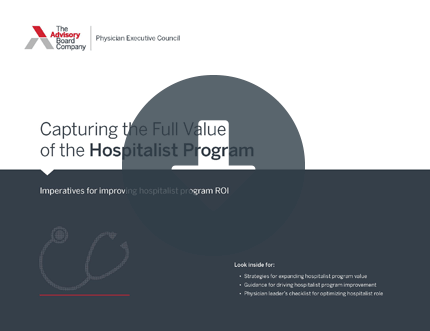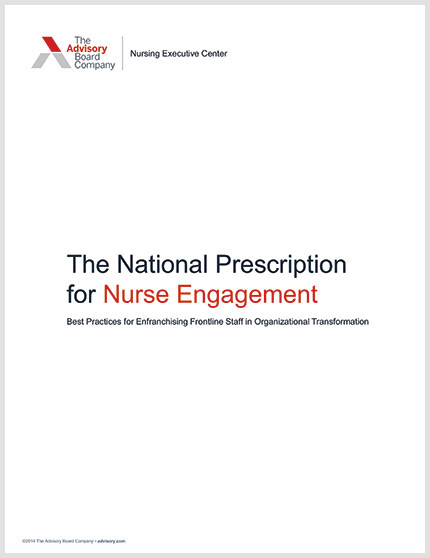Medical City Healthcare in Texas is trying to address the state's nursing shortage through an innovative program that enables the health system's full- and part-time employees to go to nursing school at no cost, Sabriya Rice writes for the Dallas Morning News.
Get the national prescription for nurse engagement
An answer to a growing problem
Medical City launched the Two-Step Nursing Pathway program about 10 years ago to address the growing shortage of nurses, a nationwide phenomenon that has hit Texas especially hard, Rice reports.
According to Rice, the United States has had a nursing shortage for decades, and it's only expected to get worse as the baby boomer generation gets older. Texas currently is short around 16,000 nurses, and the shortfall is expected to worsen to about 60,000 nurses by 2030, according to the Texas Nursing Association.
Texas' Department of State Health Services looked at positions for RNs specifically, and found that of the 51,744 full-time positions available, about 5,637—or 11 percent—are not filled. And the supply of nurses is projected to increase by only 35.4 percent by 2030, even as the demand is expected to grow by 53.8 percent.
How the program works
For the Two-Step Nursing Pathway program, Medical City partnered with Collin College in McKinney, Texas, and El Centro College in Dallas. Medical City employees, who work in non-nursing jobs, can enroll in the two-year program to earn an associate's degree in nursing at no cost, with the health system covering the cost of tuition, education-related fees, books, and uniforms upfront. In return, the employee-student must commit to work full time as a registered nurse for at least two years.
Tricia Scott—the director of workforce development for Medical City, who helped launch the program in 2007—said the program has accepted applicants from a variety of backgrounds, including kitchen staff, secretaries, lab workers, and telephone operators. According to Scott, many of these people would not have been able to attend nursing school without financial help. Overall, around 84 percent of the graduates from Medical City's program stay within the hospital system, Scott said.
And while Scott declined to specify how much the hospital spends to enroll employees in the program, she did say the program is less costly than recruiting nurses from outside the system, the cost of which can range from between $60,000 and $90,000.
From our Experts
4 ways nursing leaders can find cost savings"I don't know that there is anywhere that is untouched by the nursing shortage," Scott said. "There's a lot of need. So, you have to be more diligent in your recruiting, and come up with programs that attract people."
Similar programs across the state
According to Kat Hinson, the director of communications for the Texas Nursing Association, many other health systems within Texas are also looking to address the nursing shortage.
For instance, several hospitals have established intensive training programs, such as Cook Children's in Fort Worth. Cook Children's implemented a year-long residency program for qualified nurses that enables them to more quickly shift into a specialty practice. According to the Texas Nursing Association, that program has helped improve one- and three-year turnover rates (Rice, Dallas Morning News, 7/4).
Get the national prescription for nurse engagement
It's more important than ever for frontline nurses to be engaged in their work, committed to their organization's mission, and capable of delivering high-quality care in a complex and constantly changing environment.
This report identifies the unique challenges of engaging nurses and equips nurse leaders with five strategies for building a highly engaged workforce.
Don't miss out on the latest Advisory Board insights
Create your free account to access 1 resource, including the latest research and webinars.
Want access without creating an account?
You have 1 free members-only resource remaining this month.
1 free members-only resources remaining
1 free members-only resources remaining
You've reached your limit of free insights
Become a member to access all of Advisory Board's resources, events, and experts
Never miss out on the latest innovative health care content tailored to you.
Benefits include:
You've reached your limit of free insights
Become a member to access all of Advisory Board's resources, events, and experts
Never miss out on the latest innovative health care content tailored to you.
Benefits include:
This content is available through your Curated Research partnership with Advisory Board. Click on ‘view this resource’ to read the full piece
Email ask@advisory.com to learn more
Click on ‘Become a Member’ to learn about the benefits of a Full-Access partnership with Advisory Board
Never miss out on the latest innovative health care content tailored to you.
Benefits Include:
This is for members only. Learn more.
Click on ‘Become a Member’ to learn about the benefits of a Full-Access partnership with Advisory Board
Never miss out on the latest innovative health care content tailored to you.


